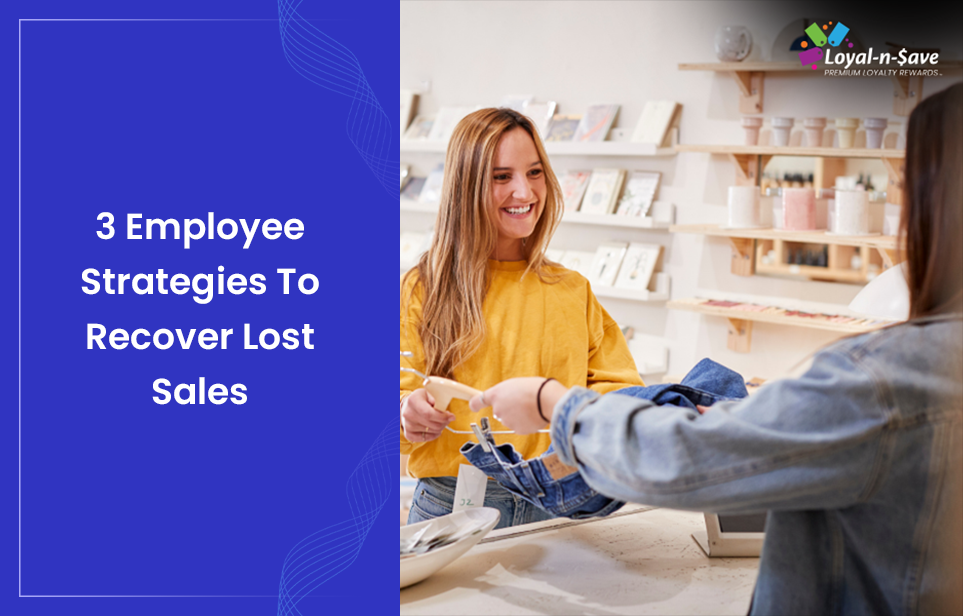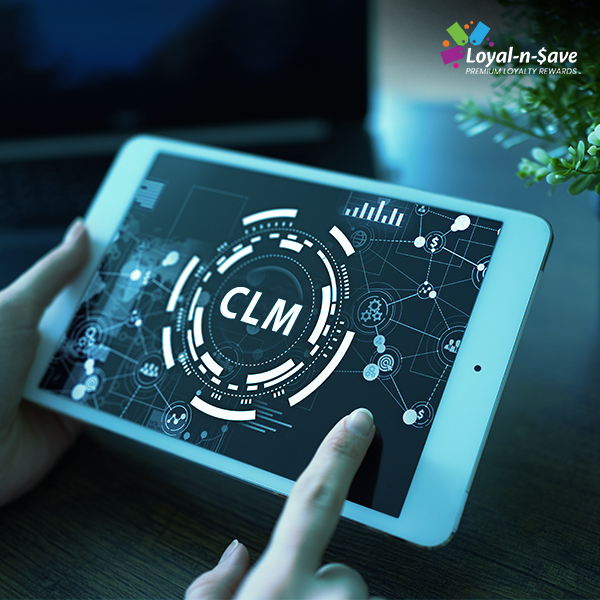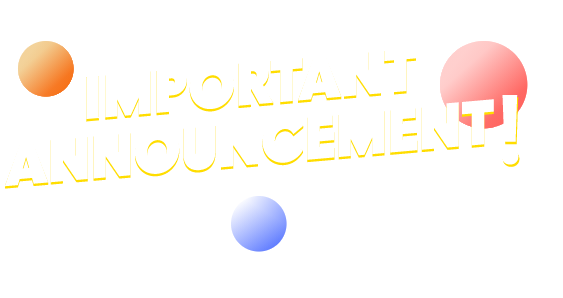3 Employee Strategies To Recover Lost Sales

In a competitive market, convenience is key when it comes to making sales and staying on top of your industry. For customers, deciding where to shop is largely the result of a few quick mental calculations based upon the following questions:
- “Does the supplier have that product that I’m looking for?”;
- “How much will this interaction cost me?”;
- “Can I get this item anywhere else for cheaper?”;
- and “How long is this interaction going to take?”
After completing their questioning, the customer (who at this point is still only a potential customer) will likely have composed a short list of vendors to potentially buy from based on the criteria listed above– and vendors should keep this information in mind: that customers have already considered making a purchase upon opening your webpage or entering your store, and any sales that become lost are likely due to some inconvenience experienced by the customer during their search.
These are some of the factors that must be considered when assessing potential reasons for lost sales– because when multiple vendors are selling the exact same product, customers must look for reasons not to buy as well as reasons to buy. In this case, then, the solution to preventing lost sales is first to improve service, and second, to work on increasing customer satisfaction. Fortunately for readers of this blog, our team of loyalty specialists at Loyal~n~Save have gotten together to outline three trial-proven strategies that employers can use to improve customer service and recover lost sales.
Beginning with strategy number one: Find the Right Incentives.
Find the Right Incentives
When profits begin dropping as a result of lost sales, one strategy that can be used to recover them is to sell more products. While this solution might seem a little too obvious at a glance, it’s a sure-fire way to guarantee that sales recover indefinitely, because if done correctly, it could potentially improve company morale and create a more positive workplace filled with more motivated workers.
Incentivizing employees is a time-tested strategy for improving workplace motivation, which, of course, can lead employees to want to make more sales. The challenge with implementing this particular strategy is in knowing what incentives will be effective for motivating your unique staff. For instance, will material incentives, such as cash or in-store credit, be enough to make them want to sell? Or, will less tangible incentives, such as paid time off, be more effective? Understanding what drives your employees will be the key to knowing what types of incentives will be useful for gaining their support and cooperation.
Below includes examples of potential incentives that can be used to motivate your employees:
- Gift cards
- Rewards points
- Cash
- Time off
- Hotel vouchers
- Percent of sales
- Paying for classes, college credits, or certification courses
- Professional/ self-development training
- New Technology (e.g., laptops, iPhones, TVs, headphones, speakers)
- Tickets for events (e.g., sporting events, theater shows, etc.)
One of the most popular methods used to incentivize employees is through the use of sales SPIFs. A “SPIF” (or special performance incentive fund) is a short-term incentive used to encourage employees to focus on selling specific inventory items. These types of incentives can be useful for reaching specific short-term sales goals and motivating employees to improve their performance.
As studies have shown, SPIFs work particularly well when combined with elements of gamification, which creates some healthy competition among workers to drive up sales. Additionally, when further incentives that reward employees for making “extra” sales by upselling are introduced, profits can then grow even faster thanks to the small boost in revenue.
For an example of how this all might work, just imagine creating a SPIF incentive that rewards employees with a small percentage of a sale each time they manage to upsell an item. Now, imagine doing this while also offering an even bigger reward (something intangible like a vacation) to the employee that upsells the most items. With small and large incentives working in tandem, sales are sure to skyrocket as employees work harder to try and earn more rewards. And the best part is everybody wins!
Turn Your Employees into Brand Ambassadors
Word of mouth can be a powerful tool for marketing your products to customers. In fact, according to bigcommerce.com, “74% of consumers identify word of mouth as a key influencer in their purchasing decisions.” For this reason, turning your employees into ambassadors and advocates for your brand can be one of the most effective ways to boost sales, spread awareness, and produce value for your customers in general.
“74% of consumers identify word of mouth as a key influencer in their purchasing decisions.”
As studies have shown, consumer purchasing decisions are more likely to be affected by word-of-mouth marketing than digital ads. The reasons for this can be related to anything from the human need for connection, to conflict avoidance, saving face, or just trusting other humans more than machines; however, regardless of the exact reasons why customers seem to react better to interpersonal advertising, word of mouth seems to produce a greater impact on more people with more consistent, positive results.
With the potential effects of implementing a word-of-mouth-based marketing strategy in mind, business owners should also consider other variables that go into interpersonal exchanges, such as human error. Naturally, not all of your employees are going to be born salespeople, and some may lack the confidence or charisma to attempt to make a sale, while others might simply forget what deals and offers are currently going on in your store. To avoid human error and still capitalize on the persuasiveness of word of mouth, one solution that can improve the chances of sales is to provide employees with pre-written scripts to read whenever a deal is activated.
For an example of how this strategy would work, imagine your store is hosting a buy-one-get-one-50%-off sale, and just as the consumer goes to check out their items, a prompt appears on the register side of your store’s POS screen, one telling the cashier (now salesperson) exactly what to say. Now imagine your employees reading from a script that describes the benefits of your store’s loyalty program–one that rewards them every time they make a purchase and every time they share the program with someone else, or when that person purchases something. Sooner or later, word about your loyalty programs and business will be in everyone’s mouths and sales will start climbing back to where they were before losses, and then beyond!
Offer Customer Support Training
As mentioned before, convenience is key when it comes to making sales. The reason for this is because consumers already know that they are looking for something when they decide to visit your store or your webpage, and while window shopping can also be a thing, big-ticket sales are far more impactful when it comes to maintaining your bottom line.
For consumers, inconveniences that prevent them from fulfilling orders are what drive them to abandon carts and cause business owners to miss out on sales. As for business owners, recognizing what can hereby be referred to as “barriers to access” (the requirements preventing customers from acquiring goods, such as wait time, cost, payment method, etc.) is the first step towards improving customer service and recovering lost sales whenever profits wane.
As anyone who has spent more than an hour waiting on the phone for customer support knows well, one of the biggest barriers to access for shoppers is their ability to find information, and having a live person to talk to can be the difference between a good and bad impression with a potential recurring customer.
To remedy this issue, having a knowledgeable staff that knows your company’s products and services well can help to make accessing information easier for consumers. In other words, a little bit of training can really go a long way, and conducting regular training sessions with your staff to teach them about the latest updates and details of your company can help improve customer service, as well as opportunities for retention, referrals, and future sales.
“A little bit of training can really go a long way…”
Need an All-in-One Solution?
If sales begin slipping at your workplace, then maybe it’s time to start thinking about ways to improve customer retention. Loyal customers have been shown to account for more than half of all annual sales, and according to Forbes, “New customer acquisition costs have increased by almost 50% in the past five years,” while stats from
This article was written by Loyal-n-Save, an omni-channel customer loyalty solution for retailers looking to increase customer retention and new customer acquisition.
Posted on Nov 23, 2021










